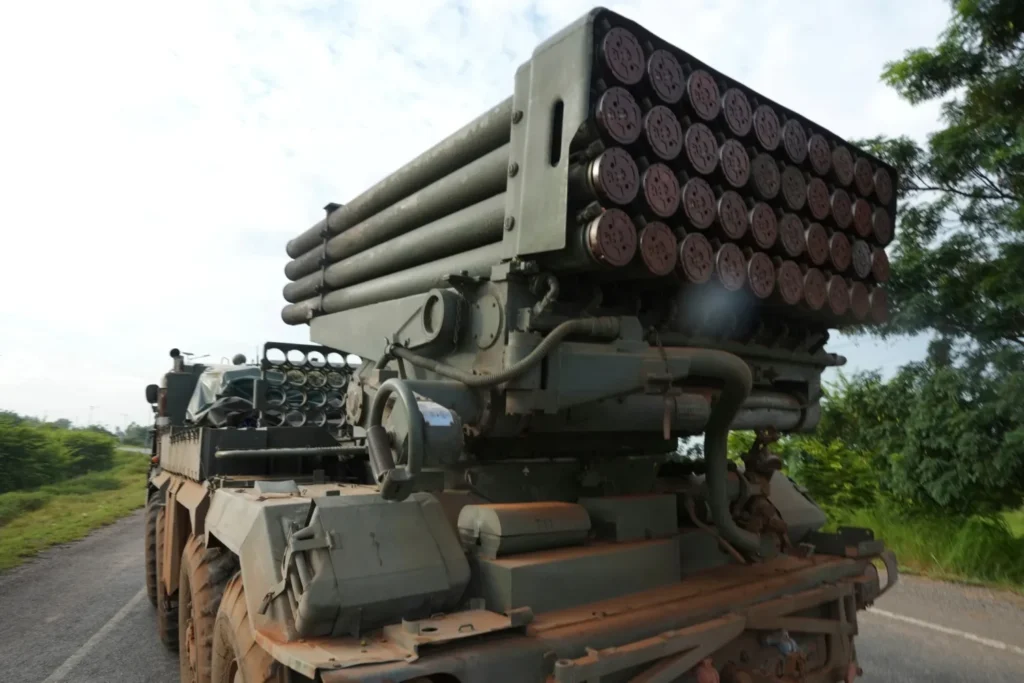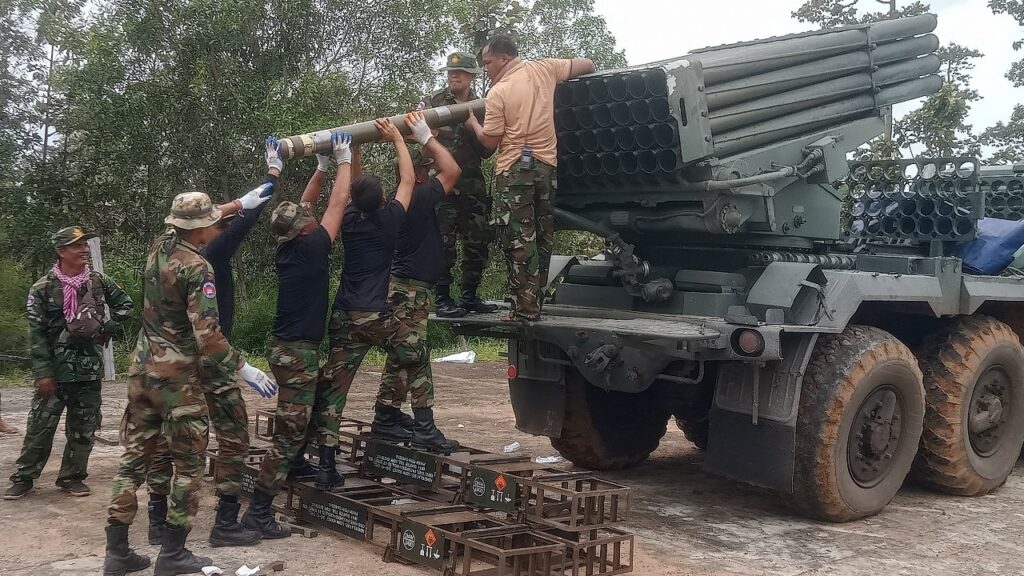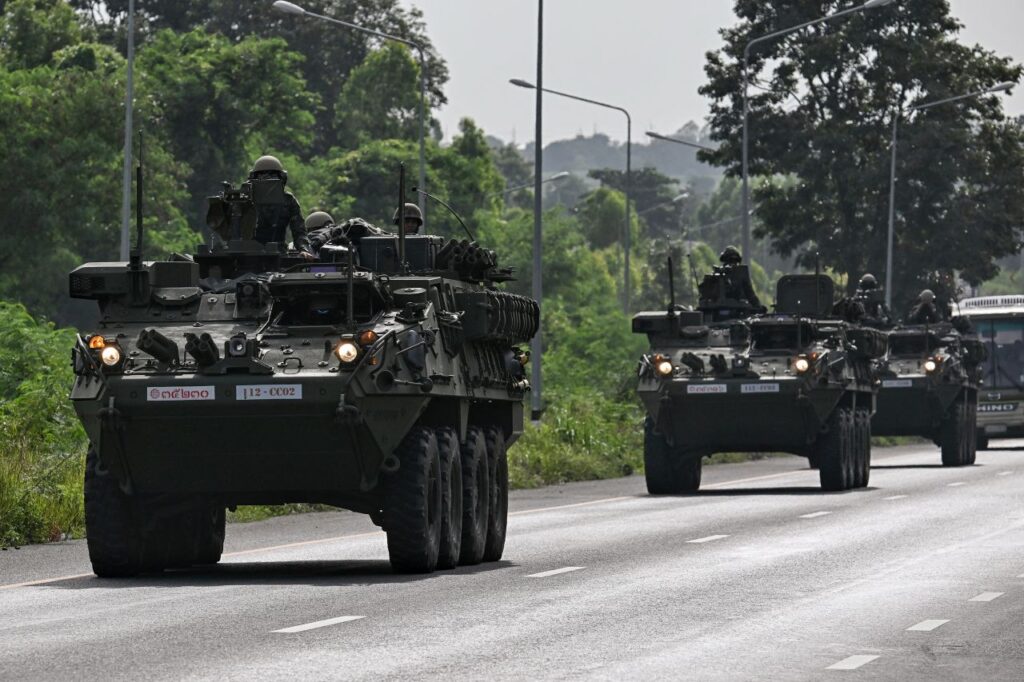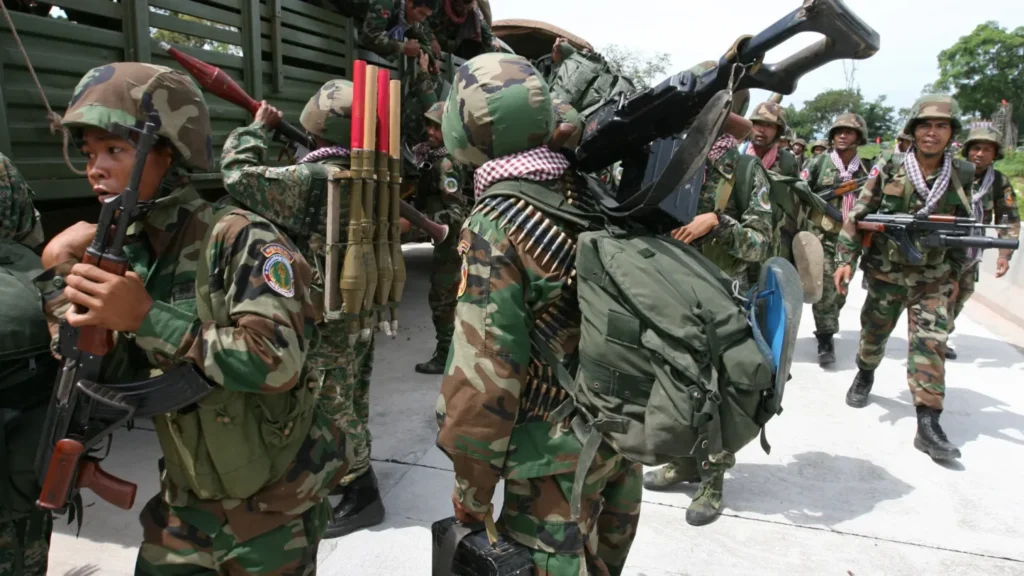The Thailand-Cambodia border conflict, reignited in May 2025 and escalating dramatically in July, has once again brought a century-old territorial dispute to the forefront, centered around areas like the Preah Vihear and Ta Muen Thom temples. This article explores the economic repercussions of the conflict on both nations and provides a comparative analysis of their military capabilities, drawing on recent reports and data.

Economic Impacts of the Conflict
The ongoing border clashes have disrupted economic activities in both Thailand and Cambodia, exacerbating existing challenges in the region. The economic fallout is driven by border closures, trade restrictions, and heightened uncertainty, with ripple effects on local communities, trade networks, and regional stability.
Thailand
Thailand, with a significantly larger and more diversified economy, faces economic strain primarily due to disrupted trade and political instability.

Key impacts include:
- Border Closures and Trade Disruptions: Thailand’s military closed all border checkpoints with Cambodia across seven provinces (Ubon Ratchathani, Surin, Buriram, Sri Sa Ket, Sa Kaeo, Chanthaburi, and Trat) on July 24, 2025, halting cross-border trade and travel. Cambodia is a key trading partner, and the closure affects exports of goods like fruits, vegetables, and energy supplies, as well as tourism, a significant revenue source for Thailand’s border provinces like Surin and Sisaket. The Thai Enquirer reported that 582 schools in border areas were closed, with some serving as shelters, disrupting local economies further.
- Political Instability and Investor Confidence: The conflict coincides with Thailand’s political turmoil, with acting Prime Minister Phumtham Wechayachai navigating a fragile coalition government following the suspension of Prime Minister Paetongtarn Shinawatra. A leaked phone call between Paetongtarn and Cambodia’s Hun Sen, where she criticized a Thai military commander, has fueled nationalist backlash and weakened her government, potentially deterring foreign investment. The prospect of a 36% U.S. tariff, effective from August 1, 2025, adds further pressure on Thailand’s export-driven economy, particularly in agriculture and manufacturing.
- Evacuation and Local Economic Losses: The evacuation of 40,000 civilians from 80 villages near the border has disrupted local businesses, agriculture, and tourism in provinces like Surin, Sisaket, and Buriram. Damage to civilian infrastructure, including a hospital and a petrol station, will require costly repairs, further straining local budgets.

Cambodia
Cambodia’s smaller and less diversified economy is more vulnerable to the conflict’s disruptions, particularly given its reliance on trade and tourism. Key impacts include:
- Trade Bans and Economic Isolation: Cambodia retaliated against Thailand’s border closures by banning imports of Thai fruits, vegetables, fuel, and even cultural exports like soap operas, while also cutting reliance on Thai internet and power supplies. These measures, aimed at asserting sovereignty, risk isolating Cambodia economically, as Thailand is a major trading partner. China, Cambodia’s largest trading partner, may fill some gaps, but the immediate loss of Thai imports could lead to shortages and price hikes.
- Tourism and Heritage Site Damage: The Preah Vihear Temple, a UNESCO World Heritage Site, is central to Cambodia’s tourism industry, attracting international visitors. Reports indicate that Thai airstrikes caused “significant damage” to the temple’s surrounding structures, potentially deterring tourists and reducing revenue. Cambodia’s Ministry of Culture and Fine Arts condemned the strikes as a “cultural disaster,” highlighting the long-term economic impact on heritage tourism.
- Economic Fragility and Nationalism: Cambodia’s struggling economy, already facing challenges from global trade uncertainties and a 36% U.S. tariff threat, may see the conflict as a double-edged sword. Former Prime Minister Hun Sen has used the dispute to rally nationalist sentiment, potentially distracting from domestic economic woes but risking further economic isolation if tensions persist. The government’s focus on military buildup could divert resources from critical development projects, such as infrastructure funded by China.

Regional Economic Implications
The conflict threatens the economic harmony of the Association of Southeast Asian Nations (ASEAN), which emphasizes peaceful dispute resolution. An export block or prolonged trade disruptions could lead to Cambodian goods being dumped on other ASEAN markets, affecting regional trade balances. Additionally, China’s growing influence in both countries, through investments like Thailand’s Bangkok-China railway and Cambodia’s new airport, could shift regional economic dynamics if Beijing mediates or leverages the conflict.
Military Strength Comparison
The military disparity between Thailand and Cambodia is significant, with Thailand holding a clear advantage in resources, technology, and personnel. Below is a comparative analysis based on 2024 data from the International Institute for Strategic Studies and Global Firepower.
Thailand
- Global Ranking: 25th out of 145 countries (Global Firepower, 2025).
- Defense Budget: $5.73 billion in 2024, significantly higher than Cambodia’s.
- Active Personnel: Approximately 360,000, including 245,000 army personnel (115,000 conscripts).
- Equipment:
- Army: 400 battle tanks, over 1,200 armored personnel carriers, and 2,600 artillery pieces.
- Air Force: 46,000 personnel, 112 combat-capable aircraft (including 28 F-16s and 11 Swedish Gripen jets), and dozens of helicopters.
- Navy: 70,000 personnel, including a marine corps with 23,000 personnel, one aircraft carrier, seven frigates, and 68 patrol/coastal combat vessels.
- Strategic Advantage: Thailand’s air force is one of the best-equipped in Southeast Asia, demonstrated by the deployment of six F-16 jets in the July 2025 clashes, one of which destroyed a Cambodian military target. Thailand’s status as a U.S. major non-NATO ally provides access to advanced military technology and training.

Cambodia
- Global Ranking: 95th out of 145 countries (Global Firepower, 2025).
- Defense Budget: $1.3 billion in 2024.
- Active Personnel: 124,300, with the army being the largest branch at 75,000 soldiers.
- Equipment:
- Army: Over 200 battle tanks and 480 artillery pieces, but less advanced than Thailand’s arsenal.
- Air Force: 1,500 personnel, no fighter aircraft, 10 transport planes, 10 transport helicopters, and 16 multi-role helicopters (e.g., Soviet-era Mi-17s and Chinese Z-9s).
- Navy: 2,800 personnel, including 1,500 naval infantry, with 13 patrol/coastal combat vessels and one amphibious landing craft.
- Strategic Considerations: Cambodia’s military is smaller and less technologically advanced, relying heavily on ground forces. The lack of fighter jets limits its ability to counter Thai air superiority, as seen in the July 2025 airstrikes. Cambodia’s military was formed in 1993 from a merger of Communist forces and resistance armies, and it faces challenges with modern equipment and training.
Conflict Dynamics
The July 2025 clashes highlighted Thailand’s military dominance, with F-16 airstrikes targeting Cambodian positions in response to alleged rocket and artillery fire. Cambodia’s reliance on artillery and ground defenses, coupled with accusations of deploying landmines (denied by Cambodia), indicates a defensive posture. Both sides have accused each other of initiating the conflict, with Thailand claiming Cambodian drones and rocket launchers provoked the response, while Cambodia alleges Thai troops violated agreements by advancing on disputed temples. The conflict’s escalation, including
Thailand’s border closure and Cambodia’s diplomatic downgrading, underscores the military imbalance and the potential for further Thai dominance in direct engagements.


Comments